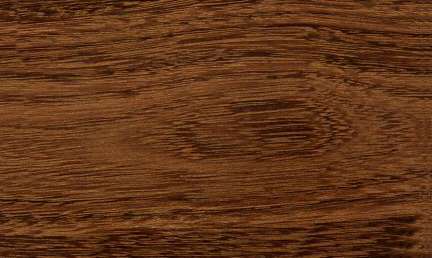
Pericopsis (Pericopsis mooniana)
Family: Leguminosae
Common names: Joemoek, Kayu laut, Kuku, Nani laut, Nedun, Pericopsis
Distributed in: Indonesia, Malaysia, Papua New Guinea, Philippines, Sri Lanka (Oceania and S.E. Asia)
Distribution overview: The species occurs in southeast Asia, and is found in Malaysia, Sri Lanka, Indonesia, and the Philippines.
Common uses: Agricultural implements, Balusters, Bedroom suites, Billiard-cue butts, Boat building (general), Boat building, Boxes and crates, Bridge construction, Brush backs & handles, Building construction, Building materials, Cabin construction, Cabinetmaking, Canoes, Carvings, Construction, Decks, Domestic flooring, Drawer sides, Drum sticks, Factory construction, Factory flooring, Flooring, Flooring: commercial heavy traffic, Furniture , Furniture, Handles: general, Heavy construction, Interior construction, Joinery, Kitchen cabinets, Ladders, Lifeboats, Light construction, Living-room suites, Mine timbers, Moldings, Musical instruments , Musical instruments, Office furniture, Organ pipes, Paneling, Parquet flooring, Piano keys, Pianos , Piling, Plywood, Poles, Radio - stereo - TV cabinets, Railroad ties, Shipbuilding, Sounding boards, Sporting Goods, Stairworks, Stringers, Sub-flooring, Toys, Turnery, Vehicle parts, Veneer, Veneer: decorative, Violin bows, Violin, Xylophones
Product sources: Trunk DataTrunk diameter of the mature tree is about 12 to 28 inches (30 to 70 cm).
Environment profile: Data source is World Conservation Monitoring Center
This species is officially classified as Vulnerable within its natural growth range in Indonesia, Rare in Malaysia, and either Extinct, Endangered, Vulnerable, or Rare in Java, Kalimantan (Indonesia), and Sri Lanka. Its status in the wild is listed as unknown because of insufficient information in Malaysia, Papua New Guinea, Philippines, Borneo, Sulawesi, Micronesia, and Palau
Tree size: Trunk diameter is 100-150 cm
Colors: the heart isDark brown, Dark brownand the sapwoodSapwood is lighter than heartwood , White to yellow.The grain isStraight, the textureFineand the lusterLustrous
Natural durability: Susceptible to attack from powder post (Lyctid & Bostrychid) beetles, Very durable
Odor: No specific smell or taste
Kiln Schedules: Dry at a slow speed
Drying Defects: Resin Exudation
Tannin may promote wood discoloration during drying
Ease of Drying: Gum Exudation
Tree Identification: Bole/stem form is not buttressed
Comments: The bark of the tree is reported to contain tannin
Carving: Good results
Cutting Resistance: Sawing characteristics are good
Nailing: Holds nails well, Splits easily during nailing
Planing: good
Resistance to Impregnation: Sapwood is moderately resistant
Resistance to Splitting: Poor
Response to hand tools: Responds well to hand tools
Sanding: Good sanding properties
Turning: Easy to turn
The material is reported to generally work well with ordinary machine tools. It turns, mortises, moulds, bores, and routs fairly easily, but may pick-up slightly in some operations.
Polishing: Very Good to Excellent;
- Numerical data Metric
- Numerical data English
- Strength properties
- References
 |
 |
 |
 |
| Item |
Green |
Dry |
Metric |
| Specific Gravity |
|
|
|
| Density |
|
769 |
kg/m3 |
| Bending Strength |
795 |
1240 |
kg/cm2 |
| Crushing Strength |
399 |
664 |
kg/cm2 |
| Hardness |
|
|
kg |
| Impact Strength |
|
|
cm |
| Shearing Strength |
|
158 |
kg/cm2 |
| Stiffness |
132 |
152 |
1000 kg/cm2 |
| Tangential Shrinkage |
8 |
|
% |
| Radial Shrinkage |
4 |
|
% |
| Weight |
769 |
608 |
kg/m3 |
| Maximum Load |
|
|
cm-kg/cm3 |
| Toughness |
|
|
cm-kg |
| Static Bending |
|
|
kg/cm2 |
|
 |  |  |  | | Item | Green | Dry | English | | Bending Strength | 11319 | 17640 | psi | | Density | | 48 | lbs/ft3 | | Maximum Crushing Strength | 5684 | 9457 | psi | | Shearing Strength | | 2259 | psi | | Stiffness | 1891 | 2166 | 1000 psi | | Weight | 48 | 38 | lbs/ft3 | | Radial Shrinkage | 4 | | % | | Tangential Shrinkage | 8 | | % | | Volumetric Shrinkage | 11 | | % | |
Shrinkage, Radial = moderate
Density (dry weight) = 46-52 lbs/cu. ft.
Shrinkage, Tangential = large
Moderate
Fairly large
Small
Small
Shrinkage, Volumetric = moderate
Large
Fairly large
53-60 lbs/cu. ft.
The bending strength qualities of this species in the air-dry condition is very high, far superior to those of Mahogany. It has superior properties in compression parallel to grain in the air-dry condition than Teak, White oak, or Hard maple. The wood has high density.
Bolza, E.,1975,Properties and Uses of 175 Timber Species from Papua New Guinea and West,Irian,C.S.I.R.O. Div. Building Research Report,no.34Burgess, P.F.,1966,Timbers of Sabah,Sabah Forest Record, no.6Eddowes, P.J. 1977. Commercial Timbers of Papua New Guinea - Their Properties and Uses. Forest Products Research Center, Office of Forests, Department of Primary Industry, Papua New Guinea.Eddowes, P.J.,1977,Commercial Timbers of Papua New Guinea: Their Properties and Uses,Hebano Press, Port Moresby, Papua New GuineaGriffiden, K.,1967,Mechanical, physical and other properties of some West Irian (New Guinea,wood species and their suitability for the wood working industries in the,Netherlands,Forest Products Research Institute, TNO, Delhi, NetherlandsKeating, W.G., Bolza, E.,1982,Characteristics properties and uses of timbers. South East Asia, Northern,Australia and the Pacific,C.S.I.R.O. Div. Chemical Technology,Inkata Press,1Stadelman, R.C.,1966,Forests of South-East Asia,Wimmer Bros., Memphis TennesseeWhitmore, T.C. (Ed.,1972,Tree Flora of Malaya A Manual for Foresters Volume 1,Forest Department Ministry of Agriculture and Lands Malaysia
|








